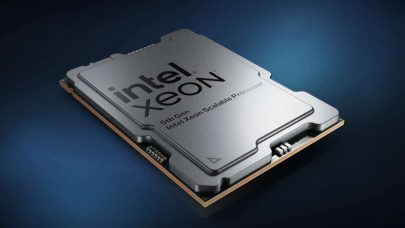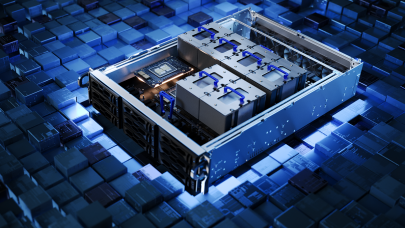
Intel Won’t Have a Xeon Max Chip with New Emerald Rapids CPU
December 14, 2023
As expected, Intel officially announced its 5th generation Xeon server chips codenamed Emerald Rapids at an event in New York City, where the focus was really o Read more…

Forget Zettascale, Trouble is Brewing in Scaling Exascale Supercomputers
November 14, 2023
In 2021, Intel famously declared its goal to get to zettascale supercomputing by 2027, or scaling today's Exascale computers by 1,000 times. Moving forward t Read more…

Latest CXL Spec Lined up to Support DDR6
November 14, 2023
In a few years, servers may not look the same as memory, storage, and accelerators move to separate enclosures. An interconnect called CXL is making that possib Read more…

Aurora the Survivor: Exascale Supercomputer Arrives After Eight Years of Doom
November 13, 2023
Many products were sacrificed in the eight years it took to bring the Aurora supercomputer to life. Nonetheless, anticipation for the second U.S.Exascale system Read more…

More Cores, Higher Prices: Intel’s Server Revenue Expected to Increase
November 3, 2023
Intel's data center business is recovering, showing healthy margins despite growing competitive pressure. The healthy margins result from higher average se Read more…

Intel Getting Squeezed and Benefiting from Nvidia GPU Shortages
September 10, 2023
The shortage of Nvidia's GPUs has customers searching for scrap heap to kickstart makeshift AI projects, and Intel is benefitting from it. Customers seeking qui Read more…

Scientific Computing Options Maturing in the Cloud
August 31, 2023
Supercomputing remains largely an on-premises affair for many reasons that include horsepower, security, and system management. Companies need more time to move Read more…

Google’s New Supercomputing H3 VMs Are Faster, but GPUs Are Absent
August 16, 2023
Google Cloud's new H3 virtual machine instances provide a big jump in performance thanks to a focus on network performance, but with restrictions: it only suppo Read more…

- Click Here for More Headlines

Whitepaper
How Direct Liquid Cooling Improves Data Center Energy Efficiency
Data centers are experiencing increasing power consumption, space constraints and cooling demands due to the unprecedented computing power required by today’s chips and servers. HVAC cooling systems consume approximately 40% of a data center’s electricity. These systems traditionally use air conditioning, air handling and fans to cool the data center facility and IT equipment, ultimately resulting in high energy consumption and high carbon emissions. Data centers are moving to direct liquid cooled (DLC) systems to improve cooling efficiency thus lowering their PUE, operating expenses (OPEX) and carbon footprint.
This paper describes how CoolIT Systems (CoolIT) meets the need for improved energy efficiency in data centers and includes case studies that show how CoolIT’s DLC solutions improve energy efficiency, increase rack density, lower OPEX, and enable sustainability programs. CoolIT is the global market and innovation leader in scalable DLC solutions for the world’s most demanding computing environments. CoolIT’s end-to-end solutions meet the rising demand in cooling and the rising demand for energy efficiency.
Download Now
Sponsored by CoolIT
Whitepaper
Transforming Industrial and Automotive Manufacturing
Divergent Technologies developed a digital production system that can revolutionize automotive and industrial scale manufacturing. Divergent uses new manufacturing solutions and their Divergent Adaptive Production System (DAPS™) software to make vehicle manufacturing more efficient, less costly and decrease manufacturing waste by replacing existing design and production processes.
Divergent initially used on-premises workstations to run HPC simulations but faced challenges because their workstations could not achieve fast enough simulation times. Divergent also needed to free staff from managing the HPC system, CAE integration and IT update tasks.
Download Now
Sponsored by TotalCAE
Advanced Scale Career Development & Workforce Enhancement Center
Featured Advanced Scale Jobs:
HPCwire Resource Library
HPCwire Product Showcase
© 2024 HPCwire. All Rights Reserved. A Tabor Communications Publication
HPCwire is a registered trademark of Tabor Communications, Inc. Use of this site is governed by our Terms of Use and Privacy Policy.
Reproduction in whole or in part in any form or medium without express written permission of Tabor Communications, Inc. is prohibited.
























